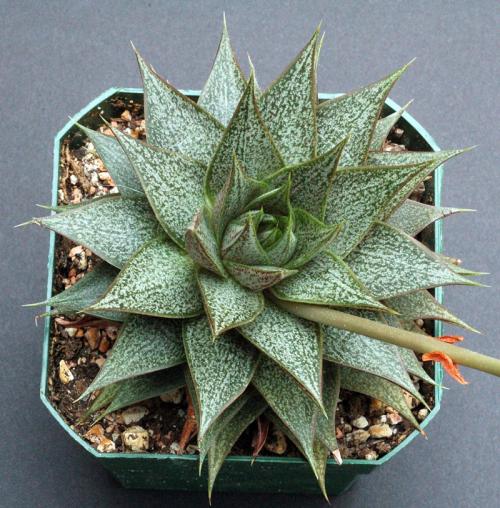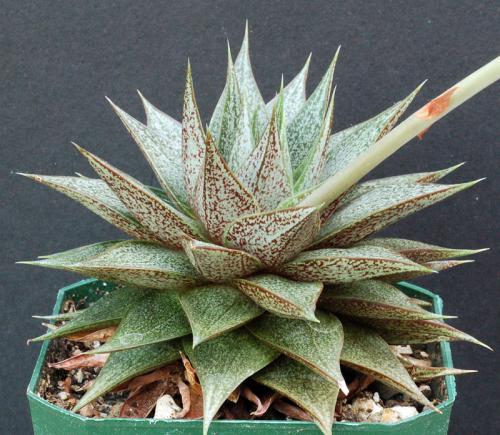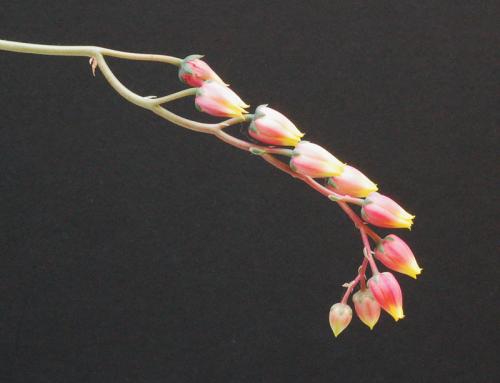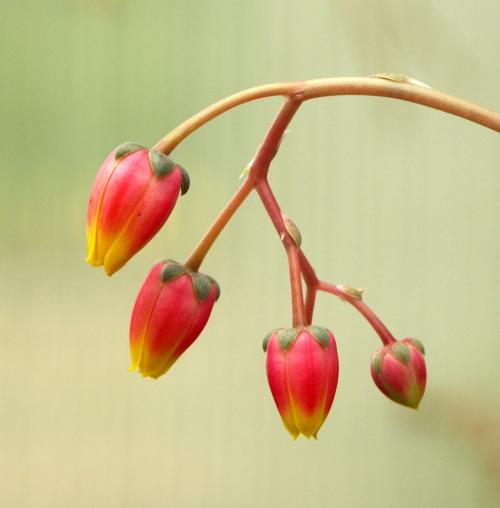PURPUSORUM Berger, 1930 (engl./ fr.)
Synonym : Urbinia purpusii Rose (1911)
Series Urbiniae
Type : C.A. Purpus & J.A. Purpus s.n., collected in southern Mexico 1909, US615402.
Distribution : Mexico (Puebla, near San Luis Atolotitlán)
First Description by Rose, 1911 :
Acaulescent.
Leaves forming a very compact rosette, resembling in a most remarkable way certain species of Haworthia, broadly ovate, acuminate, 3 cm long, nearly as broad at base, glabrous, the surface peculiarly mottled with brown.
Flowering stem more or less reddish, 30 cm long, slender, bearing numerous small, ovate, acute, appressed leaves.
Inflorescence a few-flowered (6-flowered in the only one examined) raceme, pedicels of lowermost flowers 6 mm long, the upper ones shorter still.
Flowers : Sepals small, ovate, acute, green, appressed to the flower, corolla somewhat urn-shaped, 10 – 12 mm long, pinkish without, except toward the tip, this and the inner surface pale yellow, mouth of corolla small, petals acute, each bearing a large pocket at the base, stamens 10, the alternating ones nearly or quite distant, the other 5 borne on the adjoining petals just above the pocket, ovaries short, stigmas green.
Cytologie : n = 27
Note :
1. The true species is rare. Acc. to Uhl (Haseltonia 4, 1996) the plants he had received under this name from cultivation were hybrids. And of course plants offered in the trade usually are hybrids. There are several more or less similar hybrids, one of them is named E. 'Dionysos'. Offsetting plants most likely are all hybrids.
2. Walther's text (Echeveria, 1972) about E. purpusorum concerns an E. purpusorum hybrid, not the correct species, that means it is not only useless but above all : misleading. Accordingly also the text provided by M. Kimnach in IHSP, 2003, based on the description by Walther, is misleading.
-------------------------------------------------------------------------------------------------------
Synonyme : Urbinia purpusii Rose (1911)
Section Urbiniae
Distribution : Mexique (Puebla, près de San Luis Atolotitlán)
Note :
La vraie espèce est rare. Les plantes couramment offertes dans le commerce sont des hybrides. Il existe plusieurs hybrides plus ou moins proches, l'un d'eux est nommé E. 'Dionysos'. Les plantes rejetant facilement sont probablement tous des hybrides.
Attention :
The following photos are doubtful, they do not seem to represent the true species : according to the above cited original description the pedicels of the flowers are far too long, they should be at most 6 mm and shorter !
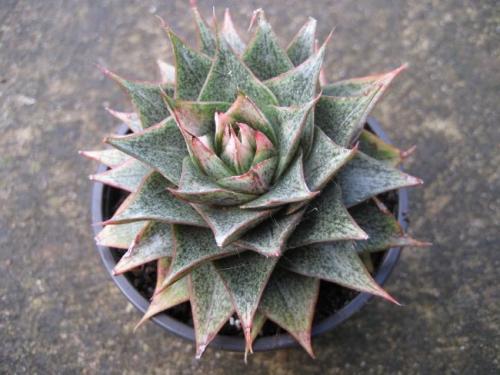
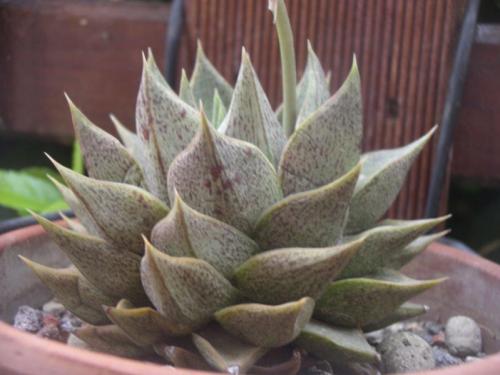
Photo Mateo Lichtenstein
